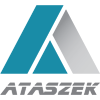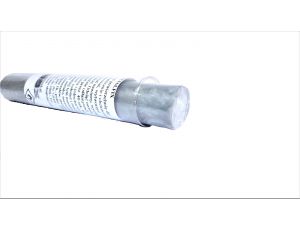Metal adhesives
What metal glue, or how to choose the right product? It is not that difficult, despite quite a lot of glues and various metals. Below are some tips and the most common examples of joining and pouring. The only distinction we need to make is whether the element is two separate materials or a crack, scratch or hole. For the latter, you repair Kemiskit FE21 - if you have steel or cast iron, AL21 - if aluminum and its alloys and MED21 for copper, brass and bronze. The repair is done in the same way, i.e. you mill the crack and grind 1-2 cm around. You apply the selected version of the high-temperature glue and rub it in well. For added strength, you can embed the mesh as reinforcement. In the event that water or liquid leaks, you seal it beforehand - you block it with a very thick METALFIX mass. In this way, you break a pipe, gutter, gasoline tanks, pipes, radiators and even barrels. The second type of bonding is two separate materials. We have two examples. For large surfaces, we are talking about sheet adhesives. Enter this category and see the description if you have such a case. We will mention that, in principle, you can choose from one-component ATK 812 and two-component GB 10-10 or ATK PU 021. Now we move on to joining small and medium-sized surfaces, e.g. aluminum angle up to 1 m or galvanized steel with a magnet. with metal, also with stainless steel, it doesn't get any better than Acralock SA 1-15 or ATK EP 61. These are products that, when properly bonded, perform a cold weld with such a strong bond - up to 350 kg per sample. We even use them for car seat covers. In the case of domestic conditions, a good choice will be ATK PU 16, which is a two-component polyurethane with a fast setting time that does not react with the surface, which is why it has such a great versatility and is also suitable for non-ferrous metals with stone, facade, wood, etc. type rubber, leather or wood, go to the selected category and see the description and instructions for selecting the product. Does metal glue always have to be as strong as welding? Not always and not necessarily. This applies to connections that are dismountable from time to time. Then we use ATK 812 or GB 10-10, which are not as strong as the construction versions SA 1, SA10 or EP61. Are there any adhesives that can withstand powder coating? Yes, currently, Acralock SA 1-15 is one of the two-component glue that we have tested better with a wide range of applications. With this version, we have had customers using this adhesive for powder coating for many years and as a few, it can withstand the entire process even at high-temperature treatment up to 200 degrees in a furnace. Other products are EP 61 and kemispox FE21 or AL21 have a very narrow range of application, as the layer is min. 1 mm. It is difficult to obtain in many pieces without redesign. Which adhesives are resistant to chemicals like gasoline, oil or grease? For our adhesives, this is "no" chemistry. The rugged series are: kemispox, acralock, ATK EP and ATK PU. There are no major problems here, even if we are talking about continuous immersion. Do you have anything to galvanize? Of course, it should be remembered that it is an additional layer that oxidizes with time and is glued not to "raw metal" but to the galvanized layer. We have 3 gluing options: Ordinary degreasing and gluing SA 1-15 - the most proven version, but in special cases ATK EP61 or ATK 812 (we sometimes use p200 primer). Degreasing as above, however, the surfaces are additionally wiped with a special etchant - AP-1 The most correct, i.e. light zinc sanding with 200-500 paper or non-woven fabric, so as to collect surface oxides and not damage the surface, and the rest as in the second point. What about bonding sheets and large surfaces? These are special adhesives, therefore the products and instructions have been separated into a separate category - sheet adhesives. Surface preparation before bonding metal? If the elements are heavily soiled - they should be roughly washed, e.g. with a pressure washer and then degreased. Only in the next stage is grinding, roughening or sandblasting and shot blasting, as far as the production line is concerned. Then we degrease again and remove filings and dirt after grinding. Remember that the adhesive bonding should take place at positive temperatures, preferably+15 and more, and if it is not possible, heat the elements to 20 or even 30 degrees so that they maintain a positive temperature (except products that can stick at low temperatures - but this is not recommended). Such warmth of the material allows for one more very important detail, such as removing residual moisture that may adversely affect the subsequent process. Secure the elements so that they do not move during the initial setting. Below you will find the answer to your question. What glue should be used for metal, so that it is good and strong, and additionally it seals the hole and is resistant to gasoline, and whether the glue can be as strong as riveting, replace welding or screws, and can it be a two-component adhesive instead of a one-component adhesive. If you are gluing small elements made of steel, stainless steel, galvanized steel and even magnets, choose versions SA 1-15; When it is copper, brass or bronze, the kemiskit med21 version should be selected, especially when repairing cracks and holes, because we can pour this product on these surfaces. In the case of two separate surfaces, we choose ATK EP61, it is the so-called weld glue The strength is so great that we can replace welding in many places. If you want to glue the above metals on large surfaces or with wood, concrete, stone, etc., you can glue it with the ATK 812 version and with ATK U800 contact glue. Quite specific gluing, i.e. letters from brass to stone like granite, marble, etc. then choose ATK PU16 or ATK 812 for a simple reason - if you try to steal the letters, the glue is not strong enough to damage the monument.












